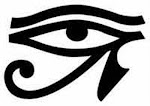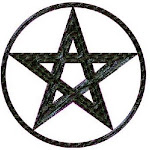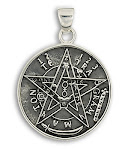Moon phases are important to Wiccans. Traditionally, goddesses such as Artemis (new moon/maiden), Hera (full moon/mother) and Hecate (waning moon/crone) have represented the moon's changing faces. Spells that are governed particularly by one of the aspects are often called during the corresponding moon phase.
The Maiden governs the aspect of childhood, new beginnings, spring, new starts and the first menstruation of a girl. The Mother represents maturity and motherhood, the harvest, summer, bounty and strength. The crone governs endings, old age, wisdom, justice and retribution and Magickal mysteries.
Rituals on the full moon are very powerful. Many Wiccans believe that the time of the full moon holds the great bounty of Magickal energy, given to Witches by the Mother. This means all the spells you want to do will be stronger. It is also more likely that the results will happen faster. Personally, I believe that each cycle of the moon holds the same amount of energy but just attuned to different types of Magick. As the Mother strides the wall between youth and old age, the full moon is the best time for general Magick.
A full moon ritual can be very complex. It can have many elements or can just be a loosely tied together group of spells that a Witch wishes to cast. A Witch can also call down the moon. Calling down the moon, means that a Witch calls down the power of the moon and the presence of the Goddess. This can be a very intense experience and I've found it works best with several Witches.
A very basic ritual honors the moon, draws power from it and then uses a spell to focus the granted power. A request of the Goddess instead of a spell can also be done. In this kind of ritual, the Goddess is more present than during some of the others. Due to this, a Witch should take care to be respectful and precise.
Recently, I did a combined Shamanic and Wiccan full moon ritual. It was a very powerful experience and the blending seemed to work really well. I suggest caution though, as sometimes if you don't know the other people well, the ritual can create a discord. Also, make sure the other pagan practitioner is willing to be flexible. The God and Goddess are happy for Witches to practice with and learn from other religions. Just be respectful of both traditions.
Basic Full Moon Ritual
First cast a Circle. The Circle should be fully cast, as major acts of Magick that are required by a full moon ritual, need a Witch's total concentration. It is very difficult to maintain a lesser Circle during major Magicks and could be dangerous to the Witch. Once the Circle is cast, kneel before your alter looking up at the moon and say;
"Lady Moon bright and serene,
Shining with the bounty of the Mother,
Look down on us your Children of the Earth.
Come, light of the Goddess,
Fill us with your power.
Lend us your blessings,
Let your light surround us.
Impart to us your light and blessing.
Your love and grace, surround us.
Surround us Goddess,
Surround us with your love."
Once the moon's energy has been called down, a Witch must direct the granted energy. Sometimes, there will be no direction but only meditation. The energy is then released with the undoing of the Circle into the environment. A spell or series of spells can also direct or use up the granted energy. A request can also be made of the Goddess. She may then choose to use the energy you have been granted, for the stated purpose.
"Power blessed to me by the Goddess,
rise in me for healing,
to replenish and renew my being.
Power blessed to me by the Goddess,
Surround me with strength.
By the power of the Goddess,
So mote it be."
Keep the request formal if you want. A more personal prayer will also be heard if you choose not to set your request into words. If there are others within the Circle who have taken part in the ritual, have them also make their own request. I have also heard of group requests that work just as well. As with many other strong Magicks or major rituals, the rite must be closed.
"Goddess and Spirits,
You have heard our voices,
and our Craft has been completed.
Depart with our thanks and our love,
as we eat these cakes to replenish our bodies,
and this water which shall cleans our souls.
By the power of the Goddess and Spirits,
This Circle is undone but not broken,
So mote it be."
Variations on calling down the moon and working with the given energy are all over the internet. There is no version that is the 'correct' version. The correct version, is the version that makes you feel good. Don't hesitate to make your own or adapt an existing ritual.
In the Shamanistic and Wiccan version that I recently did, the Circle was not formally closed. Instead we worked on a beach and let the sea naturally close and undo the circle. This was according to Shamanistic tradition and I found that it worked very well. I went back the next day and found that the circle was as fully washed away and no residues were left. I have given the ritual closing that we did that night above.
Saturday, January 30, 2010
Full Moon
Posted by Danaan at 8:40 AM 1 comments
Saturday, January 16, 2010
Why we dream?
Dream Theorists
There is no proven fact on why we dream, which is why there are so many theories on the topic. There is Freud's theory that dreams carry our hidden desires and there is Jung's theory that dreams carry meaning, although not always of desire, and that these dreams can be interpreted by the dreamer. After these theories, others continued such as the Cayce theory in that dreams are our bodies means of building up of the mental, spiritual and physical well-being. Finally came the argument between Evans' theory and the Crick and Mitchinson theory. Evans states that dreaming is our bodies way of storing the vast array of information gained during the day, whereas Crick and Mitchinson say that this information is being dumped rather than stored. Whichever theory is true, we may never know, but from these following theories we can decide for ourselves what we believe to be true and further help us into understanding our dreams.
Freud's Theory
Out of all theories before his, and all of those today, this is the one that stands out the most. He believed that a dream represented an ongoing wish along with the previous days activities. They may even portray wishes that have been inside us since early childhood. In fact, he believed, every dream is partially motivated by a childhood wish. Another interesting idea was that nothing is made up during a dream and that they are biologically determined, derived completely from instinctual needs and personal experiences.
Probably one of the most interesting ideas among these theories is his theory of dream occurrence. Dreams occur in a state of "ego collapse" when the demands of the Id (imperative bodily needs) and Superego (conscience ego ideals) converge upon the Ego (personal desires and mediator between the Id and Superego). In easier terms, a dream will occur when the unconscious wish is bound to the preconscious instead of just being discharged.
Many of Freud's theories still stand true today, but most of all in the area of defense mechanisms our body uses while we dream. If our minds have been dealing with too much denial, regression, or repression, it causes an internal conflict, a dream in this case, to take place. This prevents us from building up intolerable states of psychological tension in waking life. This is why, if you become too emotional, it actually works to "sleep it off."
According to Jung
Jung, disagreeing with Freud's theory, quickly developed his own which contradicted Freud's. Jung believed the most effective method for dream interpretation was the use of series correlation. Freud didn't even believe interpretation was possible by the dreamer and that dreams could only be interpreted by a trained psychologist. Jung was the one who gave hope to all dreamers who were looking for the meaning in our dreams without having to hire a "professional."
Series correlation is a process involving the analysis of dreams over time. Jung suggested taking similar dreams from you dream journal and merging the dream images together forming a larger dream. Try and gather these images into your head, he suggested, and from these images determined if there are any waking situations that might be related. From this information write out a physical action that could be taken based off of the information learned through using this technique.
Like Freud, Jung categorized the mind into three parts: the collective unconscious, the personal unconscious, and the conscious. The collective unconscious consists of imbedded deposits of world processes. It does not depend on personal experience, only the images which are prefigured by evolution. The personal unconscious is a receptacle or storage mechanism for that which is not contained within the consciousness. It holds forgotten association, unnoticed experiences, observations, moral questioning, repressed and discarded thoughts, half-thoughts, seemingly irrelevant details, and incongruities. Finally comes the consciousness, wich develops through sensing, thinking, and intuition.
When Jung interpreted dreams he found that the most important thing to do was ask yourself questions about the images in your dreams and from these questions, write down all of the associations you can think of. Here are the questions he would ask himself:
What is the shape of the image?
What is the function of the image?
What alterations does the image go through?
What does the image do?
What do you like and dislike about the image?
What does the image remind you of?
Cayce's Experience
When it came to the idea of dreams having purpose, Cayce's theory was a bit different then the others. He believed dreaming to be the bodies way of "self edification," which is the building up of the mental, spiritual, and physical well-being. It was a way of quickening the dreamer to his/her own human potential. By getting a good nights sleep, any person could develop more mature values, stretch their thinking, and right one's self.
According to Cayce, there are five different levels that dream's stem from. These different levels are the body level, subconscious level, level of consciousness, level of superconscious, and the level of the soul. What they can do for you is anything from presenting messages of your body calling for aid during sickness to stating problems which must be solved within the conscious.
Cayce believed that if you were to interpret your dreams correctly you must thoroughly study yourself. Once you know how you feel about dreams and what they can do for you can you begin to study your dreams. If you have a dream, according to Cayce, it's primary focus is to either solve problems and adapt to external affairs or awakening and alerting the dreamer to new potential within the self. The first step to Cayce's method of interpretation is to determine which of the two major functions of dreams is the primary focus of the dream.
The second step is the process of taking inventory. You need to know your conscious and subconscious mind inside out. Know future plans, goals, interests, stances, and decisions. Know your hidden fears, longings, dependencies, and defenses. Know the cycles, needs, habits, and stresses of the body. Once you finish with these two steps you can begin to interpret your dreams and decide how they can help you better yourself mentally, physically, and spiritually.
Evans' Organization
According to Evans, every time we go to sleep our brain disengages from the external world and uses this time to sort through and organize all the information that was taken in throughout the day. Sleep, especially during REM sleep, is when the brain becomes isolated for the sensory and motor neural pathways. During this time our data banks and program files are opened and become available for modification on re-organization, based on what happened during the day.
In this theory, we are not aware of the full array of processing that occurs during REM sleep. While we dream the brain comes back on-line for a short period of time and the conscious mind is allowed to observe a small sample of the programs that are being run. The brain attempts to interpret this information in the same way it would during the wakeful state, what is created from these samples of information is a dream. In a nutshell, dreams are nothing more than a minute amount of the information that is being scanned and sorted during REM sleep.
Crick and Mitchinson's Cleanup
Crick and Mitchinson base their theory on the fact that the cortex, unlike other parts of the brain, is made up of richly interconnected neuronal networks in which each cell has the capacity to excite it's neighbors. It is believed that memories are encoded in these networks and when one point of the web is excited a pulse travels through the network prompting recall. The problem with such network systems is that they malfunction when there is an over load of incoming information. Too many memories in one network may produce either bizarre associations to a stimulus, which creates our fantasies, the same response whatever the stimulus, creating obsessions, or associations triggered without any stimulus, which creates hallucinations.
To deal with information overload, the brain needs a mechanism to debug and tune the network. This debugging mechanism would work best when the system was isolated from extermnal inputs and it would have to have a way of randomly activating the network in order to eliminate spurious connections. This method, they say, is REM sleep and that the halluinatory quality of dreams is nothing more than the random neural firing needed for the daily cleanup of the network.
According to this theory, these signals somehow erase the spurious memory associations formed during the previous day and we wake up with the network cleaned up. They believe that people remembering their dreams could help retain patterns of thought which are better forgotten, the same patterns that your system has attempted to clean out. This is why, they say, if you don't write down your dreams they will be forgotten because your brain is still working to clear these memories out.
http://library.thinkquest.org/11189/nftheories.htm
Posted by Danaan at 9:12 AM 0 comments





